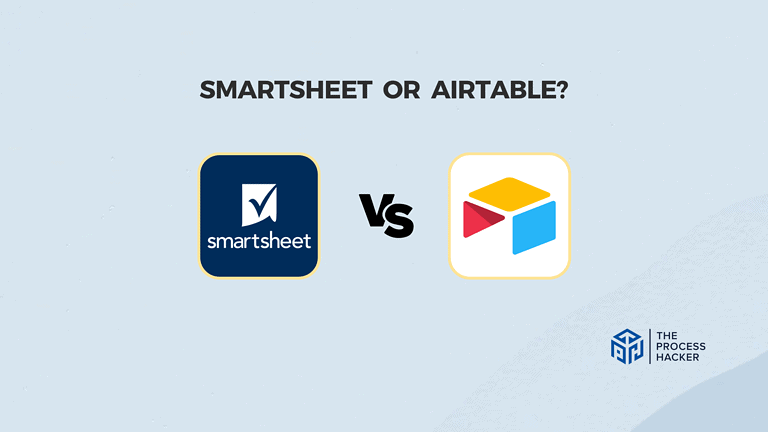How To Manage Time Effectively Using Themes
“Free time is the enemy of progress.”
Casey Owen Neistat is an American YouTube personality, filmmaker, and vlogger.
Free time can seem like you are giving yourself a break, but a lot of the time, unstructured free time can seldomly result in relaxation and satisfaction. Even for me, I can fall into the trap of endlessly scrolling Facebook and Instagram. These apps are addictive as they are designed to keep you on an algorithm-curated feed for hours. We have a limited amount of personal resources and the entire afternoon can disappear before you even know it. And then you are rushing out the door as you are late for … “where was I supposed to be again?”
Unstructured free time can require much more effort to be turned into something productive or enjoyable. Unless you have dedicated that time for relaxing, hobbies, or passion projects, unstructured time can quickly slip away without much fulfillment or accomplishment. Thus, we will use Mike Vardy’s method of time theming or managing time using themes to help add some structure to our year. Before diving into time theming, we will cover personal productivity and productivity mindsets.
What is Personal Productivity?
Mike Vardy of the Productivitist defines personal productivity as:
Personal Productivity = Intention + Attention
- Intention is a thing, aim, or plan that is intended.
- Attention is the action of dealing with or taking special care of someone or something.
For more on productivity, out The Process Hacker‘s post on what is productivity or productivity quotes.

“Intention without attention is powerless. Attention without direction is directionless.”
Mike Vardy, The Productivityist
Your intention is “what” you are working on. Your attention is “how” you are going to get there, specifically the massive 10X actions. Working with intention and without attention means that you have a defined goal in mind but do not understand the tasks that need to be done to complete that goal. Working with attention and without intention means that you are aimlessly getting things done without working toward a higher-level objective.
The Two Productivity Mindsets
To live what it means to be productive in our own lives, we need to merge the two mindsets. In personal productivity, the two mindsets are time-based and task-based:
A Time-Based Mindset forces you to focus on what’s urgent.
The time-based mindset is a reactive one in which you use deadlines to get stuff done. The time block to get the work done is created by the bounds of the start point or now and the deadline.
A Task-Based Mindset allows you to focus on what’s important.
The task-based mindset is a proactive one in which you are using priorities to get things done. The priorities set the order of what you will do to complete the tasks, typically outlining specific tasks for given dates. Now, we can merge the two mindsets and manage our time using themes to help us structure these time periods.
What is Time Theming?
Time Theming is a time management method in which a focus or theme is established for a specific period of time.

We can establish themes for single years, which is known as the “Annual Axiom.” These ideas can also be applied to days or months, or weeks for “Weekly Sprints.” Lastly, themes can span multiple days, which is known as “Horizontal Theming.”
Themes can be revolutionary, because you are structuring your time by assigning an underlying idea to concentrate on during that period of time. These focuses can be applied regardless of whether you prefer getting your work done based on deadlines or priorities. Instead of constantly worrying about what you have to do for a given month, week, or day, time theming will help take that sense of unknown and anxiety away. This productivity method also helps you concentrate on specific work items when you are overwhelmed by a significant workload.
5 Guidelines for Managing Your Time Using Themes
Mike Vardy has created five rules for time theming, such that the assigned themes are effective in helping us get our work done.
1) Work backwards from your certainties.
Your certainties are the facts that you know to be true or events that will happen. We may have big work projects, personal activities, or the school year in our lives that fill up our calendar. These realities will provide you with the boundaries to build your themes around.
Example: A certainty could be that your kids always start school in September every year. Thus, you can institute the monthly theme of “Going Back to School” for September to help orient everyone in the family. The theme would help you and your family prioritize activities for your kids to start their school year successfully.
2) Themes are funnels or filters for your focus.

Themes will help you manage your time and work based on your assigned theme for that time period. This time management method provides a default state for your mind to go to when you drift off course. Without assigned themes to help provide direction, getting sidetracked may result in being overwhelmed or activities that do not help you achieve your goals.
Example: Let’s suppose that you find yourself running out of clothes or getting behind on your bills. You can pick a day of the week (Sunday) and assign the theme for that day to be “Chores and Admin.” When Sunday comes around, your mind will be directed toward working on your finances, yard work, laundry, etc. This would help you regularly work on your Chores and Admin, which results in rarely running out of clothes and paying your bills on time.
3) Do not let anomalies derail your ability to do work related to the theme.
We all have anomalies in our schedule that don’t fit with the activities that are related to our assigned theme for a given time period. However, we should not let these activities derail our focus from the assigned theme for that time period. Additionally, we should also leave room for work that needs to get done that is not related to the assigned theme.
Example: Let’s say that Sunday is our Chores and Admin day, and you take your kids to a birthday party for another kid in their class. This activity is an anomaly as you usually start doing your “Chores and Admin” work from the beginning of the day. After the birthday party, you don’t let this activity stop you from getting some of your Chores and Admin done.
4) Choose time themes that are practical for a given time period.

Mike Vardy calls this concept, “Idea meritocracy,” which is a strategy for choosing the most practical idea for a given time period. There are considerations such as the climate, holidays, work schedules, etc. that will affect when a given theme is appropriate for a specific time of year or time period.
Example: Let’s suppose you live in Canada, and one of your New Year’s resolutions is to improve your gardening skills to grow different vegetables and herbs. It would not be reasonable to assign “Gardening” as the theme for January, because it is not sensible as the wintertime is too cold to grow anything and work outside for long periods of time. It would be more appropriate to pick April for “Gardening” as the start of spring will allow you to work on planting and yard work.
5) You don’t have to theme everything.
It may seem that you may have to come up with a theme for everything in your life and work. However, not every time period requires a time theme or needs to, as it may not make sense or is unnecessary. Also, it may be tempting to plan and manage our time using themes far in advance, but it is not recommended as our plans and themes will probably be wrong or likely to change.
Exercise: Theming Your Year, Months, and Weeks

Annual Axiom: Time Theming Your Year
Mike Vardy says that you should give yourself a time theme for the year to motivate and guide you for the year. Some ideas can come from the mottos of sports teams, inspirational quotes, or spiritual verses. It is crucial to make it your own, so you can strongly identify with your Annual Axiom. Here is Mike Vardy’s and my Annual Axioms for 2020:
- Mike Vardy: “WITNMW: Whatever it takes, no matter what.”
- Mine: “Just Do It. You’ll make mistakes along the way, but you’ll learn and grow.”
Monthly Themes: Time Theming Your Months
Establish themes for most of the months in the coming year. Again, not every month needs a theme, and you can assign or change them later in the year as necessary. For example, here is the list of my Monthly Themes for 2020:
- January – Organization
- February – Relationships
- March – Coaching
- April – No Theme
- May – Project Management
- June – No Theme
- July – Transition between Jobs
- August – Backpacking Adventure
- September – Business Growth
- November – No Theme
- December – Planning
Weekly Sprints: Time Theming Your Weeks
For projects that are doable in seven days or less, you can establish a “Weekly Sprint” for that week. You can theme certain intensive weeks, but should not theme all of them. Weekly sprints should be spread out over the year, so you do not burn out.
Mike Vardy, Productivityist
- Twitter: @mikevardy
- Instagram: @productivityist
This blog post was inspired by Mike Vardy’s Time Theming talk during ProductivityCon in Austin in early 2020. Mike Vardy helps people starting being productive through a variety of resources, including his books, podcast, and blog.
What is a Productivityist?
“A productivityist is a productivity enthusiast. They are someone who studies productivity, be it the tools or habits. They dive deeper into the realm than most people. Just like a comedian looks at the world differently, so does the productivityist. Productivityists, like other enthusiasts, like to go further in their craft and push boundaries. They like to explore new processes, new ideas, new ways to get things done. And for a while they wind up doing productive more often than being productive…but they start to shift the other way over time.”
Next Steps
I hope this post helps you manage your time using themes, also known as time theming. If you have any further questions or need additional help, feel free to comment below or send me an email. Also, if you want more Process Hacker content, you should subscribe to our weekly newsletter on Productivity, Habits, and Resources.








Love your annual axiom share! Great post.